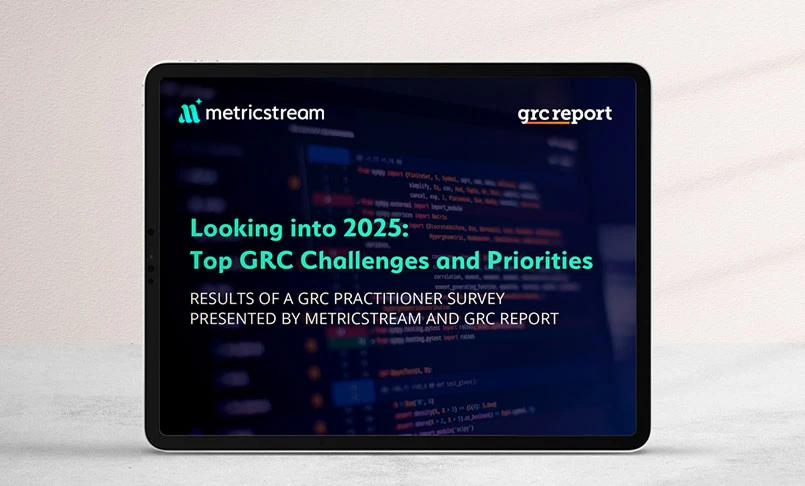Key Takeaways
- Risk assessments are important in helping organizations identify, analyze, and mitigate potential threats, ensuring proactive decision-making and resilience.
- The different types of risk assessment methods include qualitative (descriptive evaluation), quantitative (data-driven analysis), FMEA (failure point identification), FTA (root cause analysis), and Bowtie Analysis (cause-consequence visualization).
- Selecting the right methodology depends on risk nature, data availability, regulatory requirements, and resource constraints, ensuring the most effective approach.
- Combining qualitative and quantitative techniques enhances accuracy, offering a holistic risk evaluation.
- Risk assessment should be an ongoing process, regularly updated to address emerging threats and organizational changes.
Introduction
Navigating the complex terrain of modern business demands a vigilant approach to protecting an organization’s sensitive information, which is constantly under the threat of various security risks. However, not all risks carry the same weight, and mitigation options vary in terms of both cost and efficacy. The dilemma then becomes: How does one navigate these choices to make well-informed decisions? Here is where risk assessment comes into play.
What is Risk Assessment?
Risk assessment is the structured process of identifying, analyzing, and prioritizing potential uncertainties that could affect an organization’s objectives, operations, or assets. By evaluating the likelihood and impact of risks—from market volatility and regulatory compliance to cybersecurity threats, financial fluctuations, and natural disasters—organizations gain the insights needed to make informed decisions and allocate resources effectively.
A well-executed risk assessment forms the foundation for proactive planning, enabling businesses to respond with agility rather than react in crisis. This preparedness strengthens resilience, ensuring that when risks arise, organizations can adapt quickly and continue moving toward their goals.
What are Risk Assessment Methodologies?
Risk assessment methodologies are structured approaches used to identify, analyze, and evaluate potential risks that may impact an organization's objectives. These methodologies help organizations quantify and qualify risks based on factors such as likelihood, impact, and severity. They provide a systematic framework for decision-making, enabling businesses to implement appropriate risk mitigation strategies. Common methodologies include qualitative and quantitative risk assessments, Failure Modes and Effects Analysis (FMEA), Fault Tree Analysis (FTA), and Bowtie Analysis, each offering unique insights into risk identification and management.
Common Types of Risk Assessment Methodologies
| Methodology | Definition / Approach | Best For | Key Trade-Offs |
|---|---|---|---|
| Qualitative | Uses descriptive labels (e.g., High, Medium, Low) based on subjective judgment to assess risk likelihood and impact. | Situations where data is limited or quick prioritization is needed. | Simple and fast, but lacks measurable precision and may be inconsistent. |
| Quantitative | Assigns numerical values to risks using statistical data or models (e.g., Monte Carlo simulations, expected loss). | Mature risk environments with sufficient data for detailed financial or statistical modeling. | Highly precise and transparent, but requires strong data availability and technical modeling. |
| Semi-Quantitative | Blends numeric scoring (e.g., scales of 1–10) with qualitative judgment to categorize risks. Often visualized via a risk matrix. | Teams that need more structure than qualitative offers but can’t support full quantitative analysis. | More standardized and scalable, yet still involves subjective bias and may overstate precision. |
| Asset-Based | Focuses on cataloging assets, evaluating control safeguards, and assessing threats to those assets. | Technical or IT-oriented teams with clear asset inventories to manage. | Structured for IT environments but may overlook process or people-related risks. |
| Vulnerability-Based | Prioritizes risks by identifying and evaluating technical vulnerabilities that are likely to be exploited. | Cybersecurity teams prioritizing patching and vulnerability mitigation. | Highly targeted but may miss broader business-level or strategic threats. |
| Threat-Based | Focuses on specific threat actors, tactics, and attack vectors to assess risk likelihood. | Organizations monitoring evolving attacker behavior and advanced threats. | Provides deep threat insight, but may not fully address asset or exposure-based risk dimensions. |
Insights from the Table:
- Qualitative assessments are quick and flexible but lack precision.
- Quantitative approaches offer rigor and clarity where high-quality data exists.
- Semi-quantitative models strike a balance—combining structure with usability.
- Asset-, vulnerability-, and threat-based methods cater to specific contexts, such as IT infrastructure, cyber risk, or threat intelligence.
Types of Risk Assessment Methodologies
Quantitative Risk Assessment
- Approach: Uses numerical data, mathematical models, simulations, and decision trees to calculate risks.
- Focus: Objectively measures risks in financial or numerical terms (e.g., cost, probability).
- Strengths:
- Provides analytical clarity and precise comparisons.
- Ideal for calculating financial loss, cost-benefit analysis, and measurable outcomes.
- Limitations:
- Less effective for non-quantifiable risks (e.g., reputational or cultural issues).
- Requires reliable data, which may not always be available.
Qualitative Risk Assessment
- Approach: Relies on human judgment and perception instead of numbers.
- Focus: Ranks risks on ordinal scales (e.g., Low, Medium, High or 1–5).
- Strengths:
- Flexible and adaptable for different industries.
- Effective for risks that are hard to quantify (e.g., reputation, brand value).
- Limitations:
- Results are subjective and can be biased.
- Less precise for data-driven decision-making.
Semi-Quantitative Risk Assessment
- Approach: Combines qualitative judgments with numeric scoring.
- Focus: Assigns scores to risks, producing more specific risk ratings.
- Strengths:
- More structured than qualitative methods.
- Allows for easier comparison of risks without heavy data analysis.
- Limitations:
- Still partially subjective.
- May give a false sense of precision if not managed properly.
Asset-Based Risk Assessment
- Approach: Focuses on identifying and protecting critical assets (physical, digital, or intangible).
- Key Steps:
- Asset Identification – List critical assets like data, machines, patents.
- Threat Identification – Determine potential threats (cyberattacks, natural disasters, human error).
- Vulnerability Identification – Spot weaknesses (outdated software, weak controls).
- Risk Determination – Assess likelihood and impact to prioritize mitigation.
- Strengths: Protects what matters most to business continuity.
- Limitations: May overlook external risks that are not directly tied to assets.
Vulnerability-Based Risk Assessment
- Approach: Evaluates weaknesses across physical and digital assets.
- Focus Areas:
- Fragile IT systems or outdated technology.
- Gaps in operational resilience.
- Critical equipment with insufficient maintenance.
- Strengths: Helps organizations strengthen their weakest links.
- Limitations: Focuses on vulnerabilities rather than broader threat or business context.
Threat-Based Risk Assessment
- Approach: Identifies and categorizes threats into intentional and unintentional types.
- Examples:
- Intentional: Cybercriminal groups, hackers, insider attacks.
- Unintentional: Natural disasters, employee negligence, accidental data leaks.
- Strengths: Provides a structured way to prepare for both deliberate attacks and unforeseen incidents.
- Limitations: May underemphasize vulnerabilities or asset-specific weaknesses.
Factors to Consider When Choosing a Risk Assessment Methodology
When selecting a risk assessment methodology, organizations must consider various factors to ensure an effective and accurate evaluation of potential risks. The right approach depends on the nature of risks, available data, regulatory requirements, and resource constraints.
Business Objectives
Your organization is a unique entity with distinctive needs. Hence, a 'one-size-fits-all' risk assessment methodology may not be effective. Assess your needs based on your industry, size, culture, and the specific risk landscape you operate within.
Scope
Consider the breadth and depth of risk analysis you need. While some methodologies might provide an exhaustive understanding, they may not drill down into intricate details. Select a method that gives the right balance of broad overview and detail-driven insights.
Time and Resources
You need to account for the time, workforce, and financial resources available to you. This will help you choose between an automated tool versus a more manual process, each of which has its unique advantages.
Data Quality
Your decision is as good as the data backing it up. Select a methodology that can ensure accurate, reliable, and up-to-date information is consistently available for assessment.
Expertise
Your team’s level of proficiency and the organization’s learning culture should guide your decision. An overly complex methodology could pose unnecessary challenges if your team lacks the expertise to operate it efficiently.
Scalability
Your business will evolve with time, and so should your risk assessment methodology. Choose a model that's as agile and adaptable as your ambitions.
Conclusion
As is often the case, your final choice should blend seamlessly into your broader strategic vision and contribute actively to it, becoming less of an afterthought and more of a defining attribute. Balancing rigor and fluidity, strategic direction, and adaptability, the right risk assessment methodology for your organization is a strong defense that aids in fostering an atmosphere of proactive risk management and goal-oriented growth for your business.
Frequently Asked Questions
What are Risk Assessment Methodologies?
Risk assessment methodologies are structured approaches used to identify, analyze, and evaluate potential risks, helping organizations implement effective mitigation strategies.
What is the methodology of risk assessment?
Risk assessment methodology refers to the systematic process of identifying risks, assessing their likelihood and impact, prioritizing them, and developing strategies to mitigate or manage them.
What are the five risk assessment methods?
The five common risk assessment methods are qualitative risk assessment, quantitative risk assessment, Failure Modes and Effects Analysis (FMEA), Fault Tree Analysis (FTA), and Bowtie Analysis.
How do you choose a risk assessment methodology?
The best way to choose a risk assessment methodology is to align it with your organization’s goals, industry regulations, available data, and the type of risks you face—quantitative for measurable financial impacts, qualitative for subjective or complex risks, or hybrid methods for balanced insights.
- Risk assessments are important in helping organizations identify, analyze, and mitigate potential threats, ensuring proactive decision-making and resilience.
- The different types of risk assessment methods include qualitative (descriptive evaluation), quantitative (data-driven analysis), FMEA (failure point identification), FTA (root cause analysis), and Bowtie Analysis (cause-consequence visualization).
- Selecting the right methodology depends on risk nature, data availability, regulatory requirements, and resource constraints, ensuring the most effective approach.
- Combining qualitative and quantitative techniques enhances accuracy, offering a holistic risk evaluation.
- Risk assessment should be an ongoing process, regularly updated to address emerging threats and organizational changes.
Navigating the complex terrain of modern business demands a vigilant approach to protecting an organization’s sensitive information, which is constantly under the threat of various security risks. However, not all risks carry the same weight, and mitigation options vary in terms of both cost and efficacy. The dilemma then becomes: How does one navigate these choices to make well-informed decisions? Here is where risk assessment comes into play.
Risk assessment is the structured process of identifying, analyzing, and prioritizing potential uncertainties that could affect an organization’s objectives, operations, or assets. By evaluating the likelihood and impact of risks—from market volatility and regulatory compliance to cybersecurity threats, financial fluctuations, and natural disasters—organizations gain the insights needed to make informed decisions and allocate resources effectively.
A well-executed risk assessment forms the foundation for proactive planning, enabling businesses to respond with agility rather than react in crisis. This preparedness strengthens resilience, ensuring that when risks arise, organizations can adapt quickly and continue moving toward their goals.
Risk assessment methodologies are structured approaches used to identify, analyze, and evaluate potential risks that may impact an organization's objectives. These methodologies help organizations quantify and qualify risks based on factors such as likelihood, impact, and severity. They provide a systematic framework for decision-making, enabling businesses to implement appropriate risk mitigation strategies. Common methodologies include qualitative and quantitative risk assessments, Failure Modes and Effects Analysis (FMEA), Fault Tree Analysis (FTA), and Bowtie Analysis, each offering unique insights into risk identification and management.
Common Types of Risk Assessment Methodologies
| Methodology | Definition / Approach | Best For | Key Trade-Offs |
|---|---|---|---|
| Qualitative | Uses descriptive labels (e.g., High, Medium, Low) based on subjective judgment to assess risk likelihood and impact. | Situations where data is limited or quick prioritization is needed. | Simple and fast, but lacks measurable precision and may be inconsistent. |
| Quantitative | Assigns numerical values to risks using statistical data or models (e.g., Monte Carlo simulations, expected loss). | Mature risk environments with sufficient data for detailed financial or statistical modeling. | Highly precise and transparent, but requires strong data availability and technical modeling. |
| Semi-Quantitative | Blends numeric scoring (e.g., scales of 1–10) with qualitative judgment to categorize risks. Often visualized via a risk matrix. | Teams that need more structure than qualitative offers but can’t support full quantitative analysis. | More standardized and scalable, yet still involves subjective bias and may overstate precision. |
| Asset-Based | Focuses on cataloging assets, evaluating control safeguards, and assessing threats to those assets. | Technical or IT-oriented teams with clear asset inventories to manage. | Structured for IT environments but may overlook process or people-related risks. |
| Vulnerability-Based | Prioritizes risks by identifying and evaluating technical vulnerabilities that are likely to be exploited. | Cybersecurity teams prioritizing patching and vulnerability mitigation. | Highly targeted but may miss broader business-level or strategic threats. |
| Threat-Based | Focuses on specific threat actors, tactics, and attack vectors to assess risk likelihood. | Organizations monitoring evolving attacker behavior and advanced threats. | Provides deep threat insight, but may not fully address asset or exposure-based risk dimensions. |
Insights from the Table:
- Qualitative assessments are quick and flexible but lack precision.
- Quantitative approaches offer rigor and clarity where high-quality data exists.
- Semi-quantitative models strike a balance—combining structure with usability.
- Asset-, vulnerability-, and threat-based methods cater to specific contexts, such as IT infrastructure, cyber risk, or threat intelligence.
Quantitative Risk Assessment
- Approach: Uses numerical data, mathematical models, simulations, and decision trees to calculate risks.
- Focus: Objectively measures risks in financial or numerical terms (e.g., cost, probability).
- Strengths:
- Provides analytical clarity and precise comparisons.
- Ideal for calculating financial loss, cost-benefit analysis, and measurable outcomes.
- Limitations:
- Less effective for non-quantifiable risks (e.g., reputational or cultural issues).
- Requires reliable data, which may not always be available.
Qualitative Risk Assessment
- Approach: Relies on human judgment and perception instead of numbers.
- Focus: Ranks risks on ordinal scales (e.g., Low, Medium, High or 1–5).
- Strengths:
- Flexible and adaptable for different industries.
- Effective for risks that are hard to quantify (e.g., reputation, brand value).
- Limitations:
- Results are subjective and can be biased.
- Less precise for data-driven decision-making.
Semi-Quantitative Risk Assessment
- Approach: Combines qualitative judgments with numeric scoring.
- Focus: Assigns scores to risks, producing more specific risk ratings.
- Strengths:
- More structured than qualitative methods.
- Allows for easier comparison of risks without heavy data analysis.
- Limitations:
- Still partially subjective.
- May give a false sense of precision if not managed properly.
Asset-Based Risk Assessment
- Approach: Focuses on identifying and protecting critical assets (physical, digital, or intangible).
- Key Steps:
- Asset Identification – List critical assets like data, machines, patents.
- Threat Identification – Determine potential threats (cyberattacks, natural disasters, human error).
- Vulnerability Identification – Spot weaknesses (outdated software, weak controls).
- Risk Determination – Assess likelihood and impact to prioritize mitigation.
- Strengths: Protects what matters most to business continuity.
- Limitations: May overlook external risks that are not directly tied to assets.
Vulnerability-Based Risk Assessment
- Approach: Evaluates weaknesses across physical and digital assets.
- Focus Areas:
- Fragile IT systems or outdated technology.
- Gaps in operational resilience.
- Critical equipment with insufficient maintenance.
- Strengths: Helps organizations strengthen their weakest links.
- Limitations: Focuses on vulnerabilities rather than broader threat or business context.
Threat-Based Risk Assessment
- Approach: Identifies and categorizes threats into intentional and unintentional types.
- Examples:
- Intentional: Cybercriminal groups, hackers, insider attacks.
- Unintentional: Natural disasters, employee negligence, accidental data leaks.
- Strengths: Provides a structured way to prepare for both deliberate attacks and unforeseen incidents.
- Limitations: May underemphasize vulnerabilities or asset-specific weaknesses.
When selecting a risk assessment methodology, organizations must consider various factors to ensure an effective and accurate evaluation of potential risks. The right approach depends on the nature of risks, available data, regulatory requirements, and resource constraints.
Business Objectives
Your organization is a unique entity with distinctive needs. Hence, a 'one-size-fits-all' risk assessment methodology may not be effective. Assess your needs based on your industry, size, culture, and the specific risk landscape you operate within.
Scope
Consider the breadth and depth of risk analysis you need. While some methodologies might provide an exhaustive understanding, they may not drill down into intricate details. Select a method that gives the right balance of broad overview and detail-driven insights.
Time and Resources
You need to account for the time, workforce, and financial resources available to you. This will help you choose between an automated tool versus a more manual process, each of which has its unique advantages.
Data Quality
Your decision is as good as the data backing it up. Select a methodology that can ensure accurate, reliable, and up-to-date information is consistently available for assessment.
Expertise
Your team’s level of proficiency and the organization’s learning culture should guide your decision. An overly complex methodology could pose unnecessary challenges if your team lacks the expertise to operate it efficiently.
Scalability
Your business will evolve with time, and so should your risk assessment methodology. Choose a model that's as agile and adaptable as your ambitions.
As is often the case, your final choice should blend seamlessly into your broader strategic vision and contribute actively to it, becoming less of an afterthought and more of a defining attribute. Balancing rigor and fluidity, strategic direction, and adaptability, the right risk assessment methodology for your organization is a strong defense that aids in fostering an atmosphere of proactive risk management and goal-oriented growth for your business.
What are Risk Assessment Methodologies?
Risk assessment methodologies are structured approaches used to identify, analyze, and evaluate potential risks, helping organizations implement effective mitigation strategies.
What is the methodology of risk assessment?
Risk assessment methodology refers to the systematic process of identifying risks, assessing their likelihood and impact, prioritizing them, and developing strategies to mitigate or manage them.
What are the five risk assessment methods?
The five common risk assessment methods are qualitative risk assessment, quantitative risk assessment, Failure Modes and Effects Analysis (FMEA), Fault Tree Analysis (FTA), and Bowtie Analysis.
How do you choose a risk assessment methodology?
The best way to choose a risk assessment methodology is to align it with your organization’s goals, industry regulations, available data, and the type of risks you face—quantitative for measurable financial impacts, qualitative for subjective or complex risks, or hybrid methods for balanced insights.








